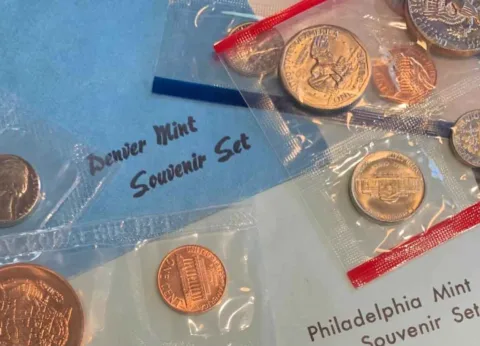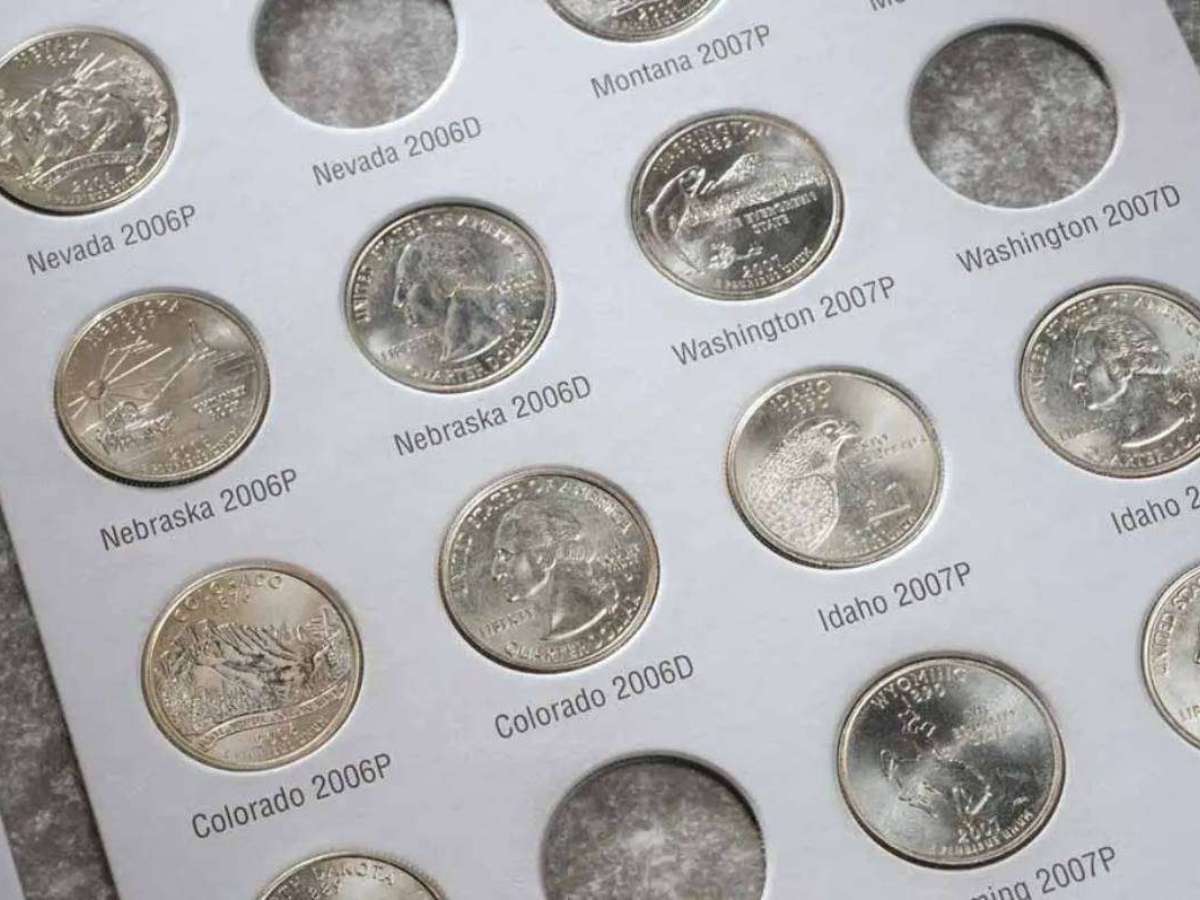
Are you curious about what a mint coin is or how much mint coins are worth?
The term “mint coin” can really mean all kinds of things to different people.
But what does “mint” and “mint coin” mean in coin collecting?
Let’s explain…
What Does “Mint” Mean?
- “We’re gonna make a mint!”
- “Would you please pass me a mint?”
- “Check out the parsley, sage, rosemary, and mint I planted in my garden!”
There are so many ways the word “mint” gets used in society…
But tacking down the meaning of the word “mint” or “mint coin” isn’t very straightforward when it comes to the hobby of collecting coins.
So, we’ll start by describing what the word mint most commonly means in the world of coins…
What Is “The Mint” In Coin Collecting?
Starting with the basics here…
“The” Mint (with a capital “M”) is the entity that makes coins for a nation. In our case, “the Mint” is the U.S. Mint that oversees the making of coins in America.
“A” mint (with a lowercase “m”) is basically a coin factory — it’s the building in which the coins are struck.
There are public (or government) mints, and there are private mints:
- Public or government mints — Public mints, which are operated by or in conjunction with national governments, strike coins primarily for the use in commerce and for collectors. Coins minted by the government mints are usually struck as legal tender for use as money in the nation they are produced or for certain nations or regions where they are recognized as real money. The United States Mint is an example of a public / government mint.
- Private mints — Private mints are operated by individuals or companies. While the pieces they strike are generally not considered legal-tender coinage, some private mints do have contracts with governments to produce coinage recognized as legal tender for use as real money in those nations or their chosen jurisdictions or territories. The Franklin Mint in Pennsylvania is an example of a private minting facility that has produced both non-monetized medals for collectors as well as legal-tender coins for nations such as Panama.
So, now you know what “the mint” is and what “a mint” is — in the world of coins.
What are “mint coins” then? Let’s dive deeper…
What Are “Mint Coins” In Coin Collecting?
What many might think “mint coin” means isn’t how collectors refer to the thing you probably think of as a “mint coin.”
Confused? Don’t worry — I’ll break it down for you here.
In many, many, MANY hobbies, to describe something as “mint” means it looks, feels, or is brand new. You’ve probably heard that word used like that before:
- “Wow, that car looks like it’s in mint condition!”
- “That baseball card looks mint…”
- “Got any near-mint comic books?”
Coin collectors are a different animal though… They don’t usually describe new-looking coins as “mint.”
Someone who says their coin is in mint condition either isn’t a coin collector or they may be trying to relate the concept of a new (or new-looking) coin to a generalized audience which might widely understand that something described as “mint” is new — or at least is like new.
So, how do coin collectors describe a coin that is like new — with no signs of wear and having never been used as money? …
There are 2 terms they use:
- Uncirculated — This refers to a coin that shows no evidence of use in circulation. (“Circulation” is the general term that describes the use of a coin as money or in commerce.) Uncirculated means the opposite of circulated. (“Circulated” is the term used to describe a coin that has seen use in circulation and shows evidence of this by way of wear on the surface of the coin.)
- Mint State — This term is somewhat reminiscent of the word “mint” as used above in the examples relating to collectible cars, sports cards, and comic books. To say that a coin is “Mint State” suggests it is in the state of condition that it was in at the mint that struck it. Thus, the coin shows no signs of use as money. In coin-collecting vernacular, Mint State has a specific reference as a grade, or statement of condition of a coin. Those who grade coins use the term “Mint State” to categorically refer to an uncirculated coin. A coin deemed to be “Mint State” will usually have a number ranging from 60 to 70 attached to the “Mint State” grade — the higher the number, the nicer the Mint State coin appears.
So, when a collector refers to a mint coin, the above is most likely what they are describing.
Mint coins, for all intents and purposes, are mint-fresh coins that are uncirculated and are graded according to the numerical Sheldon coin-grading scale anywhere from Mint State-60 to -70 (or anywhere from MS-60 to MS-70, as “Mint State” grades are commonly acronymized in the coin hobby).
How Much Are Mint Coins Worth?
It’s a good question.
The problem is there isn’t a single, neat and tidy answer to a question like, “What is a mint coin worth?”
I can tell you that, in most cases, a mint coin is worth more than face value to a collector. (Of course, I’m talking about uncirculated or Mint State coins here.)
Mint sets and proof sets (collectible sets of coins that the U.S Mint sells to coin collectors on a mostly annual basis) are usually worth at least a few dollars apiece — and sometimes hundreds of dollars or more.
Values for individual uncirculated coins depend largely on the combination of denomination, date, and mintmark of each specimen. These uncirculated or mint coin values typically range from one or two times above the coin’s face value to many thousands of times more.




